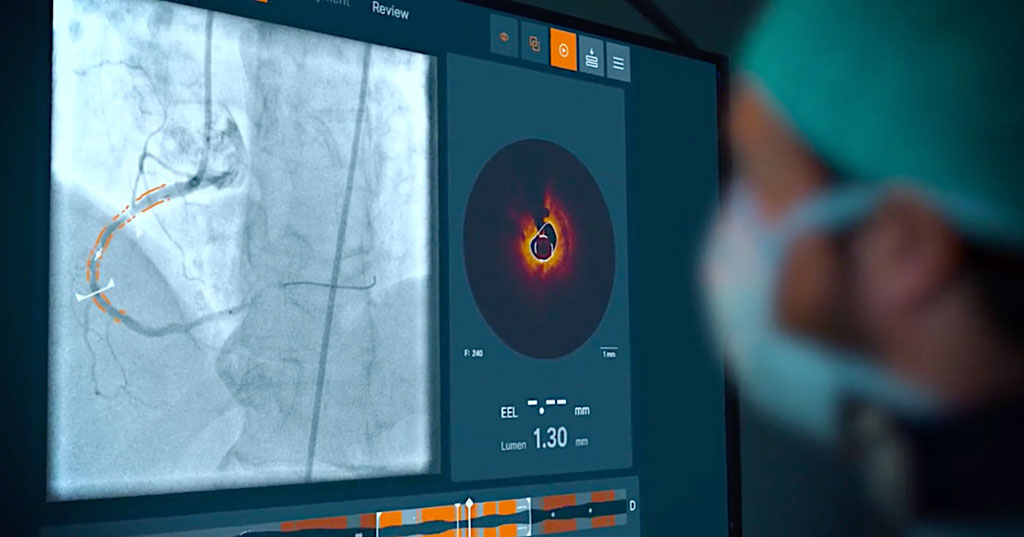AI OCT Technology Images Vessels in the Heart
By MedImaging International staff writers
Posted on 23 Aug 2021
Innovative imaging software combines artificial intelligence (AI) and optical coherence tomography (OCT) to provide an enhanced, comprehensive view of coronary blood flow.Posted on 23 Aug 2021
Abbott Laboratories (Abbot Park, IL, USA) Ultreon 1.0 Software automatically detects the degree and thickness of calcification, highlights calcification arc and maximal thickness, displays calcification angle and thickness values throughout the pullback in real-time, and highlights calcification overlays on the blood vessel. An intuitive user interface provides step-by-step guidance throughout. Ultreon 1.0 Software is designed to integrate with Abbott's Dragonfly OpStar imaging catheter and PressureWire X guidewire.

Image: Ultreon 1.0 Software detecting coronary artery calcifications (Photo courtesy of Abbot)
When used to guide stent placement, it automatically detects the vessel lumen and external elastic lamina (EEL) to identify appropriate landing zones; provides vessel diameter measurements; helps measure lesion length; facilitates stent length selection through co-registration; provides side-by-side viewing of both live and co-registered angiographs in order to aid precise stent deployment; and helps ensure optimal stent expansion and apposition, with instantaneous display of expansion and apposition results.
“As cardiologists continue to adopt OCT and move away from traditional imaging methods such as angiography, emerging technologies are pivotal to determine the best course of patient care,” said Nick West, MD, chief medical officer and divisional vice president of global medical affairs at Abbott's vascular business. AI enables Ultreon Software to automatically detect calcium and vessel diameters allowing doctors to put stents exactly where they are needed.”
“Abbott's new Ultreon Software for OCT provides an automated, comprehensive view of the artery that facilitates physician decision-making,” said interventional cardiologist Ziad Ali, MD, PhD, director of the DeMatteis Cardiovascular Institute at St. Francis Hospital and Heart Center (New York, NY, USA). “Ultreon Software guides stents to be placed with precision. These types of innovative technologies are instrumental in providing the best care for our patients.”
OCT is the optical analogue of ultrasound, typically employing near-infrared (NIR) light; but because light is so much faster than sound, measuring time is more difficult. To time the light waves bouncing back from the tissue being scanned, OCT devices use a spectrometer to determine how much their phase has shifted compared to identical light waves that have travelled the same distance, but have not interacted with tissue. The use of relatively long wavelength light allows it to penetrate into the scattering medium.














